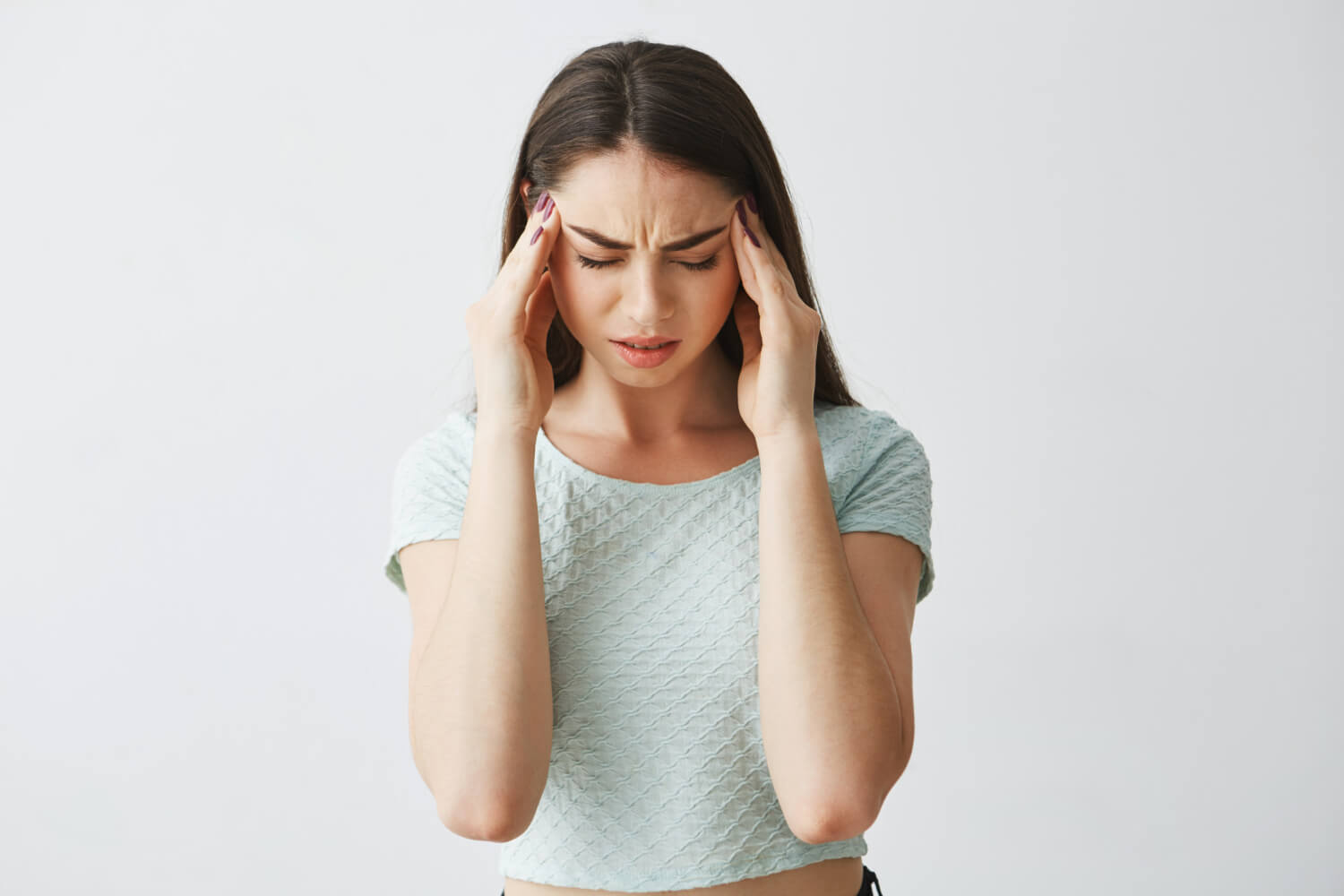About three out of four people who have migraines are women, so here we know what causes migraine in females. The International Classification of Headache Disorders (ICHD) classifies migraine as a primary headache condition with recurring unilateral headaches and notes that it has a temporary nature. There are two primary forms of migraine: migraine with aura and migraine without aura. Both types of headaches are throbbing, last 4–72 hours, and can be accompanied by nausea, photophobia, and/or phonophobia. (1)
Since females are three to four times more likely to suffer from migraine than males, we can learn more about what causes migraine in females. Women are also more vulnerable to attacks, which can result in greater impairment and a longer healing time. Although the precise mechanisms are not yet fully understood, it is thought that variations in ovarian steroid hormones, particularly estrogen and progesterone, play a role in the sex discrepancy in migraine. It is believed that a critical component of migraine pathophysiology is the production of the neuropeptide calcitonin gene-related peptide (CGRP), which is followed by activation of the trigeminovascular system. According to research, a series of alterations in the brain and nervous system that can start up to three days before the headache itself are what causes migraine in females.
According to a 2018 review, this starts with alterations in the brain’s limbic system, cortical regions, and hypothalamus. People may then suffer symptoms like cortical-spreading depression during the aura phase, which is when the brain’s nerves momentarily become dormant. Later, during the headache phase, the trigeminovascular system (which includes the trigeminal nerve) becomes active. This nerve extends around the side of the head, including the area behind the eye, where migraine discomfort is frequently felt. (2)
Sex hormones, such as estrogen, progesterone, and testosterone, undoubtedly play a significant role in the reported sex-related variations. The profound effects of these sex factors are particularly highlighted by changes in the migraine phenotype (including the frequency and severity of attacks) associated with female-specific reproductive milestones, with migraine becoming more common in women starting in puberty, peaking in their thirties, and sharply decreasing after menopause. Menstrual migraine (MM) (with and without aura) is divided into two categories by the International Classification of Headache Disorders (ICHD): pure menstrual migraine and menstrually associated migraine, both with and without aura. Progesterone levels in females with migraine were considerably greater than in those without aura during both periods of the menstrual cycle (follicular and luteal phase). Females with migraine without aura had significantly greater levels of estradiol during the luteal phase, whereas females with mild migraine without aura had significantly higher levels during the follicular phase. High estrogen levels may raise the likelihood of cortical-spreading depression, which may increase the risk of migraine with aura. This may help to explain why taking oral birth control pills that contain estrogen makes migraines worse for those who have an aura. Specific nerves may be made more susceptible to migraine triggers by estrogen’s interaction with those nerves. Despite the protective effects of testosterone, according to 2018 research, estrogen makes the trigeminal nerve cells more sensitive. A neuropeptide is hypothesized to have an important role in migraine pathogenesis by contributing to trigeminal nerve hypersensitivity and photosensitivity.
A study on the significance of iron in migraines is crucial for the production of serotonin, dopamine, and norepinephrine. Previous neuroimaging research has indicated that the accumulation of iron in the brain, particularly in the periaqueductal grey matter and deep brain nuclei, is associated with migraine pathophysiology. The findings of this study showed a connection between haemoglobin, ferritin, and iron deficiency anaemia in migraine patients, who were primarily women and girls. These results indicate that treatment for iron deficiency anaemia or iron supplements can be a helpful preventive strategy for people with migraine who also have iron deficiency anaemia. (3)
When a migraine episode occurs, pro-inflammatory cytokines and chemokines are produced in greater amounts in the plasma and cerebrospinal fluid. This is because migraine is linked to a sterile inflammation of the dura. According to the hypothesis put forth by McIlvried et al., stress, which is a migraine trigger, causes a shift in the production of pro- and anti-inflammatory mediators in the Dural lymphoid cells in favour of those that cause a migraine episode. Additionally, they proposed that this impact is stronger in females and that it is (partially) relying on sympathetic postganglionic innervation of the dura.
Must Read >>
- What is the Health Benefits of Ginger.
- What are Generic Medicine: Myths and Facts.
- Exercise During Pregnancy: Do’s and Don’ts
- Breast Cancer Awareness: Its Importance and Benefits
- What are the benefits of coconut water
- Weight loss exercise from home
- Exercises for frozen shoulder at home
- Why is water important to us
- How to stop hair fall in men
- What are symptoms for COPD
- Rich Fiber Diet
- What are the symptoms of asthma
- Aceclofenac paracetamol tablet uses
- What are the reasons of neck pain.
- What are the causes of breast cancer
- Exercise of Neck Pain
- Exercise for relieving back pain
- Self-Medication
- Home Remedy of Dry Cough
- What are causes of acidity
- Symptoms for Migraine Headaches
